Dim outlook for festive lights
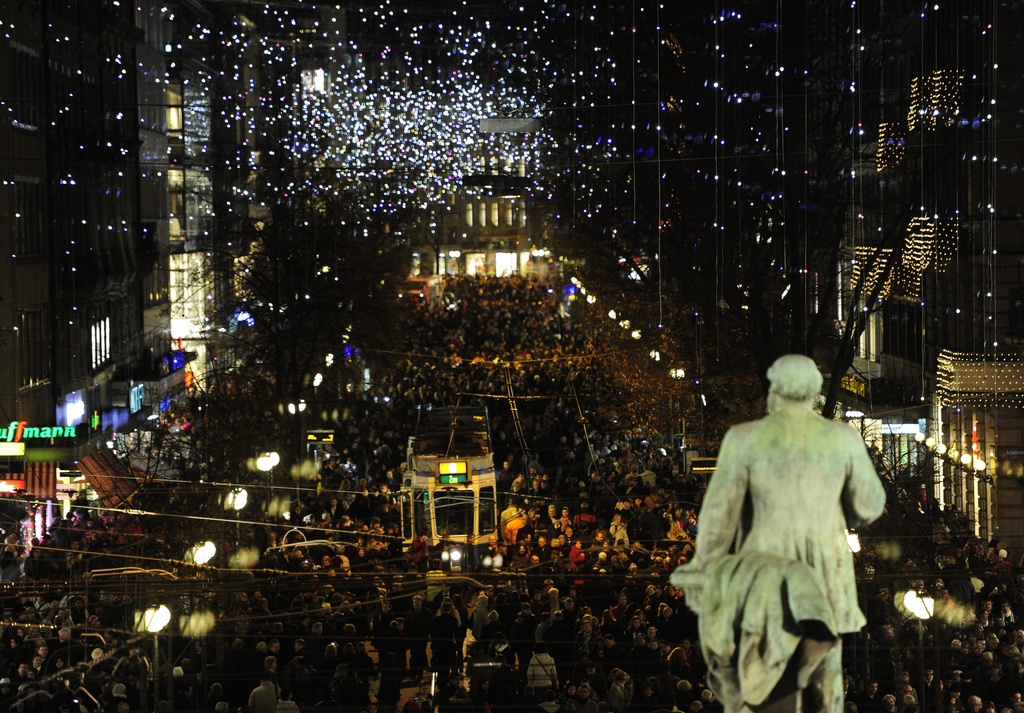
The celebratory Christmas lights in the streets around Switzerland may contribute to the festive cheer, but are the decorations an environmental no-no?
In an attempt to find out, the Swiss Agency for Energy Efficiency (Safe) has measured the consumption and cost of Christmas decorations in Switzerland.
According to their calculations, Swiss light decorations use nearly 100 gigawatt hours (GWh) of electricity – or 0.17 per cent of the total annual consumption and 2.06 per cent of December’s overall consumption.
“This represents about SFr15 million in electricity costs or the equivalent of the annual energy consumption for 25,000 households,” said Giuse Togni, a lighting specialist at Safe.
Most festive lighting is put up by private users. Individuals and businesses are each responsible for 45 per cent of Christmas lighting, compared with ten per cent by municipalities, according to Safe.
In Basel, local electricity provider Iwb estimates that individuals put up more than half of the lights.
Spokesman Erik Rummer points to an example given in the latest Iwb magazine: a reindeer sledge with incandescent lights – now banned – uses around 380 watts.
Lit for ten hours a day over two months, the plastic animal uses the equivalent of ten per cent of the electricity needed to power a three-room apartment. But with an LED (light-emitting diode), the reindeer and sleigh only give off 53 watts.
Christmas lights are set to move towards LED, Togni says. “It is an ideal light for it. However, the technology is not yet ready for public lighting, because yellow sodium light is more effective and advantageous for large areas.”
LEDs are already in use in Nyon, Basel and Zurich in December. Along the River Limmat in Zurich, the former Christmas installation used 247 kW, compared with the current 3 kW with LEDs, says Harry Graf.
Still reluctant
But the fact is that low energy light bulbs and LEDs are not yet widely used by the general public. “They are much more expensive and we choose a light depending on what you want to illuminate,” said Togni.
For Vaud Social Democrat parliamentarian Roger Nordmann, an expert on energy issues, “Christmas decorations are fun and there shouldn’t be any fundamentalist stance on them. But it’s clear we must move towards LEDs. LEDs also have a much longer lifespan.”
Away from the Christmas holiday season, the question is also being asked which bulbs are most suitable for individuals and communities.
“It’s been a subject under debate in districts for several years now,” said Matthew Chenal, spokesman for the SwissEnergy programme for municipalities, which promotes the Energy City label.
“LEDs allow for major savings, but it requires significant investments and some municipalities are reluctant to invest, because technology is advancing very quickly,” Chenal added.
Switching off?
Nordmann says that instead of taking action against Christmas lights, it would be more productive to curb lit spaces that don’t serve any purpose, such as empty shops and offices at night.
So should the habit of putting up Christmas lights to brighten the dark days of December be tolerated?
“There are obviously many points of view,” said Harry Graf of Zurich Municipal Electric Utility (ewz).
“From an ecological standpoint, Christmas lights are not effective and should be switched off. Any source of unnecessary light should also be turned off to save power.”
“But visually and for the atmosphere created, Christmas lights are a beautiful thing. And if low energy light bulbs or LEDs are used, an ecological aspect can also be addressed.”
Christmas lights in Switzerland use nearly 100 million kilowatt hours (kWh), according to estimates by the Swiss Agency for Energy Efficiency (Safe).
This equals 2.06% of total consumption in December.
The bill can be divided up as follows:
– Personal use: 43 GWh/year or 0.92% of total consumption in December.
– Businesses: 43 GWh/year or 0.92% of consumption in December.
– Municipalities: 10 GWh/year or 0.21% of consumption in December.
A 45-metre line of incandescent outdoor lights is 45 metres long: Lit for 14 hours a day for 5 weeks, power consumption amounts to 370 kilowatt hours (equal to one year powering an electric coffee maker that has an automatic shut down function).
The LED (light-emitting diode) uses about 80% less electricity. LEDs are very resistant to the cold.
A 45-metre string of LED outdoor lights uses 70 kilowatt hours for 14 hours a day for 5 weeks. (or SFr14 instead of SFr74 for traditional bulbs).
(Source: Safe)
(Adapted from French by Jessica Dacey)

In compliance with the JTI standards
More: SWI swissinfo.ch certified by the Journalism Trust Initiative
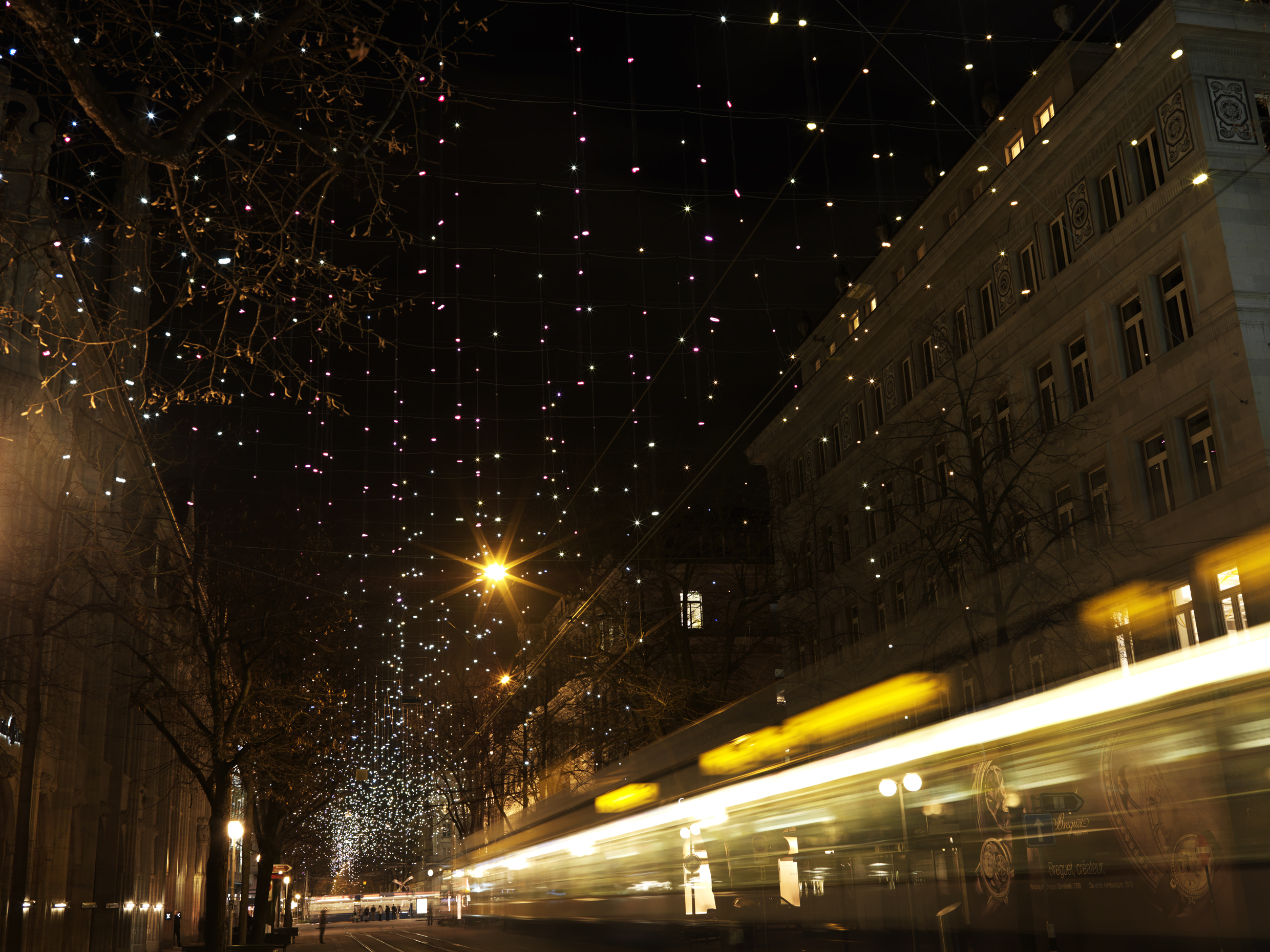
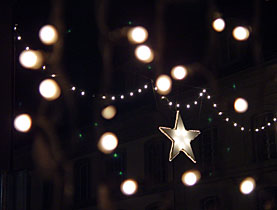
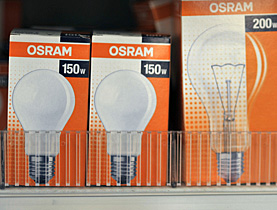
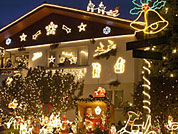
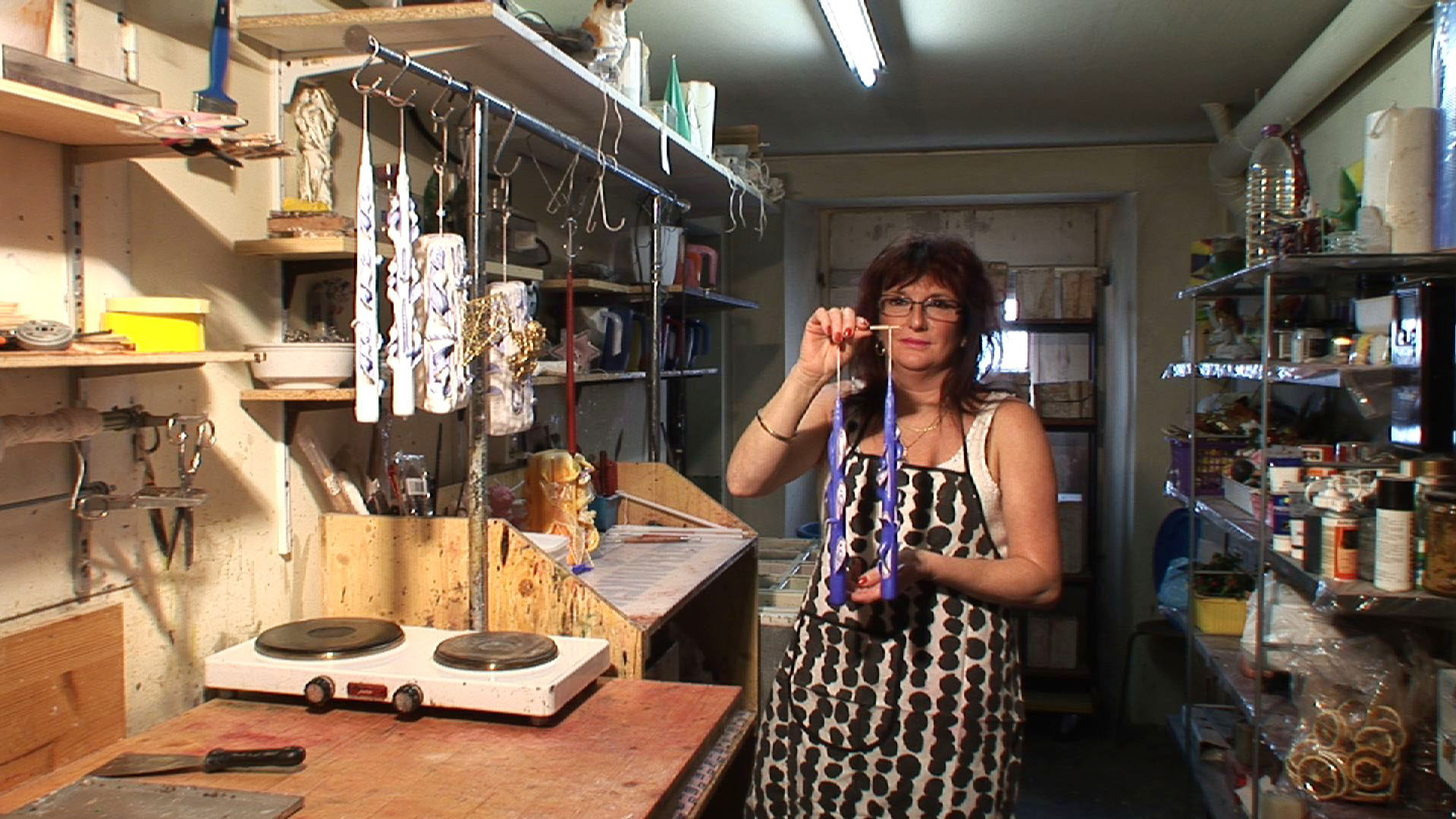
You can find an overview of ongoing debates with our journalists here. Please join us!
If you want to start a conversation about a topic raised in this article or want to report factual errors, email us at english@swissinfo.ch.